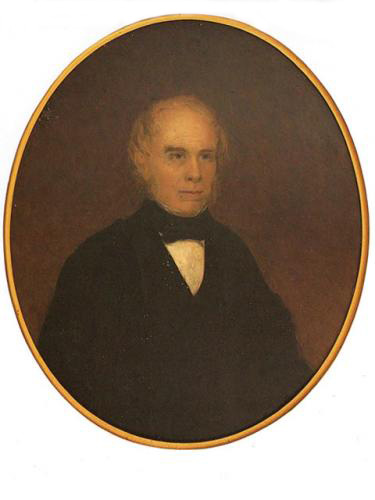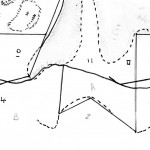Category: Genealogy
Iskair Macaulay ane Irish man
The Morrison DNA Project: Who do you think you really are?
Scotland’s Census
Angus and Lottie and Jeff and Laura
The Last Man of Bereiro
William MacGillivray in Uig

The renowned naturalist William MacGillivray was born in Aberdeen in 1796 and studied and worked most of his life there or in Edinburgh, but he had a Harris connection through his father and spent much of his childhood at Northton in South Harris (where the MacGillivray Centre now bears his name). As a young man, he returned to spend 1817-1818 there, and his diaries of that period have been published as A Hebridean Naturalist’s Journal (Acair 1996). In October of 1817 he and a party of friends and relations made a journey to Uig.
Luachar, Saturday, 18th October.
Let me describe the scenery, shooting grounds, house and its inhabitants. The scenery is generally of the grand order with little or no beauty. We have a long series of lofty mountains, turning into ridges & forming deep glens. These mountains are all rugged & precipitous, they run north-east and south-west. Stretching toward the north from them are low hills and extensive plains several miles in length and toward the south higher hills & vallies. On the declivities and under the rocks are the haunts of the deer, not easily found by a stranger, but well known to the inhabitants. Loch Rezort terminates the ground of sport on the north, the ocean on the west and south, and the Lewes on the east. The whole ground is broken into little eminences & depressions, covered with heath and some other plants – at this season of the year of a yellowish or brown colour, which renders it extremely difficult to see the deer – though the broken nature of the surface facilitates an approach to them when discovered.
The house, our place of rendezvous, is situated at the distance of between one and four miles from the places of resort of the deer, at the head of an arm of the sea which constitutes part of the northern boundary of Harris. It is what in the Hebrides is denominated a black house and what Dr Johnson calls a hut. Its inhabitants are Ewen McDiarmid, a shepherd in the employment of a gentleman of Kintail who has a very extensive tract in Harris under sheep, a tough, unpolished, but honest and civil man advanced in years; his wife Christina McCaskill, daughter of Mr McCaskill schoolmaster of Uig in Lewis, a genteel woman of about thirty; little John their son, a comical cross-grained boy; two female servants, the one a clumsy lump, the other a half-idiot with only one eye.
Luachar, Thursday, 30th October.
On Sunday, the 19th, Ewen and Miss Nelly and I and little John went to Toray, a small farm two miles down Loch Rezort on the Lewis side. One of our incitements to go there was to see two children of Ewen’s who were lodged there. Here we were treated with cream and potatoes. I made a very hearty repast. The vessels which held the cream were only two in number, so the good-man and the good-woman and Ewen were placed about one, while Miss Nelly and I got the other. Had any other arrangement been made, I had been disgusted, and I could not refuse to partake of their fare without being liable to the imputation of pride. We returned in the evening.
The Macaulay Resistence
Rev Aulay Macaulay and Tarmod Cleireach
The History of the Mackenzies
The Valtos Smiths and Calum Olach
The Lewis-Harris Boundary Dispute I: 1805
Calum Mòr’s Family
Martins of Uig
Families of Lewis by Mac Gille Chaluim
The Macleods of Pabbay and a Mealista Connection
Letter on the Origin of Iain Dubh Chraidhig
Origins of the Smiths
From Rev William Matheson (Mac Gille Chaluim), Families of Lewis (1959) in the Stornoway Gazette. Rev Matheson begins by explaining how he reckons the Smiths of Earshader (from whom are descended the Smiths of Strome, Valtos, Laxay and Keose) were Morrisons sometimes known as Mackinnons, before they acquired the surname Smith in English. He continues:
If we may take it that the clan surname of the Smiths of Earshader was Morrison alias Mackinnon (the latter representing Gaelic Mac Cianain and not Mac Fhionghuin as in Skye and Mull) we are not without some traditional information as to how the first of them came to the parish of Uig. In the Morrison manuscripts there are a number of traditions about a noted character whose career began as a personal attendant to Donald Cam Macaulay. His name calls for some comment, for it was misunderstood by Captain FWL Thomas [who wrote on the history of Uig families]. He calls him John Du Chroig, and explains this as Big-fisted Dark John. But the Gaelic for that would be Iain Dubh na Croige. The reading in the Morrison manuscripts is in fact “John du Chraik” and, better still, the tradition Gaelic form is still known in Uig and is Iain Dubh Chraidhig. This last word must be a place-name, but unfortunately we cannot identify it. It may be in Harris or in Uist. [A subsequent letter to the Gazette suggests it may be in Barra.]
The story in the Morrison manuscript is that the Lewis clans were concerned in the capture of a fully armed ship in Barra, sent, as was thought, to subjugate the Long Island. All the crew were killed, except a man with his wife and child, who were discovered to speak Gaelic. The child was Iain Dubh Chraidhig.
Matheson suggests that this story may relate to a historical event in 1610, from a letter written by Neil Macleod of Berisay, a close ally of Donald Cam.
More Macaulays of Uig
An Saighdear Chaluim Bhain
Donald Matheson, an Saighdear Chaluim Bhain, was a son of Malcolm Matheson (Calum Bàn) of Valtos and Crowlista. (Calum Bàn has some interesting ancestors who can be found by following the lines back via Hebridean Connections.) Donald was born in the 1740s and joined the army, serving at the siege of Louisbourg in 1758, and later with the 78th Seaforth Highlanders in India and Ireland. He returned to Uig where he married Chirsty Macdonald and had a large family.
One of their children, also Donald, joined the Hudson’s Bay Company in 1815 and was offered land in Manitoba, but came back to Lewis in 1821. He married Helen Maciver of Carnish and lived in Timsgarry until they emigrated to Nova Scotia; three of their children were born in Lewis and nine more in Canada. After Donald Sr. died in 1831, his widow Chirsty joined the rest of the family across the sea.
The following song, An Saighdear Chaluim Bhain, is said to have been written for Donald Sr during his time as a soldier in Ireland, though whether by Chirsty is unknown.
Hi horaibhe hoirinn hoirinn
Hi horaibhe hoirinn ail
Hi horaibhe, och is eileadh
Leamsa b’eibhinn d’fhaicinn slan.
Chuir iad thu air tìr an Eirinn
‘S aotram bha do cheum air sràid
Chuir iad umad dèise an t-saighdear
Bu fhèin an diaman a-measg chàich.


